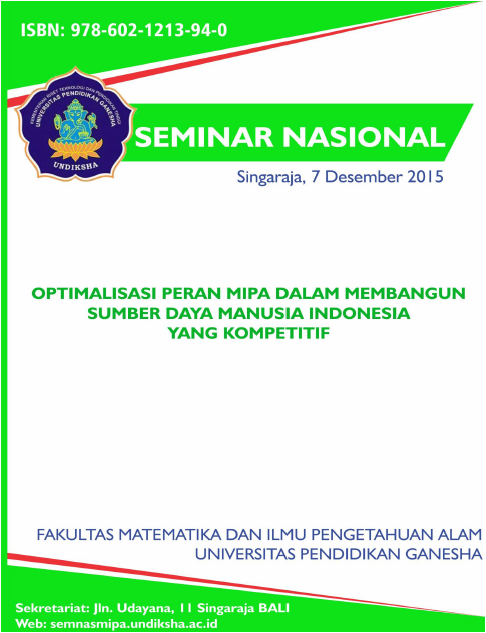Pengaruh Perbedaan Sistem Budidaya terhadap Pola Pita Protein Daging Udang Vaname (Litopenaeus vannamei)
Abstract
Penerapan teknologi bioflok, sistem budidaya heterotrofik dengan pertukaran air minimal, saat ini sedang dikembangkan dalam kegiatan budidaya udang vaname (Litopenaeus vannamei) karena dapat memberikan produktivitas yang lebih tinggi, konversi pakan yang lebih rendah, dan kualitas air yang lebih stabil. Pada teknologi bioflok, bakteri heterotrofik di dalam sistem budidaya cenderung membentuk agregat (bioflok) yang dapat dikonsumsi oleh udang sebagai sumber protein alami. Dalam penelitian ini, studi SDS-PAGE dilakukan pada daging L. vannamei sepanjang siklus produksi tambak intensif dengan sistem budidaya yang berbeda (Fitoplankton, Semi-Bioflok, dan Bioflok) untuk menyelidiki pengaruh sistem budidaya yang berbeda tersebut terhadap pola pita protein daging L. vannamei. Penelitian ini berlangsung pada beberapa lokasi di Kabupaten Tuban, Jawa Timur. Tujuan penelitian ini adalah untuk memperoleh karakteristik pita protein daging L. vannamei yang berasal dari sistem pemeliharaan yang berbeda. Hasil penelitian menunjukkan bahwa sistem bioflok menghasilkan pola pita protein dengan variabilitas yang lebih tinggi karena sistem ini dapat mempertahankan kualitas air yang baik selama pemeliharaan dan menyediakan sumber protein alternatif berupa bioflok bagi L. vannamei selain pakan pelet.
Kata kunci: udang vaname (L. vannamei), sistem bioflok, daging, pita protein, SDS-PAGE
Abstract
Application of biofloc system, a heterotrophic culture with minimal water exchange, has gained interest particularly in relation to providing high productivity, low feed-conversion ratios, and a stable culture environment, especially in shrimp. In biofloc system, heterotrophic bacterial tends to form noticeable aggregates (biofloc), which can be consumed by shrimp as a natural protein source. In relation to this, the impact of different culture systems on white shrimp (L. vannamei) muscle protein patterns was investigated. In this research, an SDS-PAGE study was performed on white shrimp muscle tissue along the production cycle in intensive shrimp culture ponds with different culture systems (Phytoplankton, Semi-Biofloc, and Biofloc). The study was located in different areas of the District of Tuban, East Java. The aim of this study was to accomplish systematic characterization of the white shrimp muscle protein pattern, which derives from each of the ponds with different rearing systems. The result of the study showed that the biofloc system yields variability of protein pattern as it maintains good water quality throughout the culture and provides an alternative protein source (as biofloc) for the shrimp besides the pellet.
Key words: white shrimp (L. vannamei), biofloc system, muscle, protein pattern, SDS-PAGE
